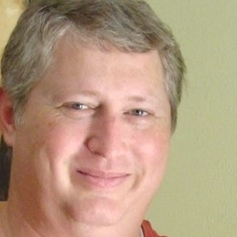
Can Pastors Survive the Strain of Change?
Orginally published on Monday, March 05, 2007 at 5:53 AM
by Todd Rhoades
Church consultant Sally Morgenthaler of Littleton, Colo., paints a grim picture of contemporary pastoring. As she sees it, the pressures bearing down on pastors are heading to a breaking point. She predicts more scandals in the church. "Our Western religion is not comfortable with [pastors] being human ... we're not comfortable with complexity," she said. On top of a historic expectation that pastors live up to an impossible standard, new U.S. realities have piled on: the megachurch ideal coupled with a celebrity culture, the increasing failure of small mainline Protestant churches and the decline of Christianity in the religious marketplace. Up until the 1980s, Morgenthaler said, a pastor could aspire to organizing a better church supper and keeping a congregation of 200 reasonably happy. Then came the megachurch movement.
Suddenly the ante was up - big time. Pastors built churches of 10,000 members and became personally famous, not to mention raking in six-digit salaries.
These pastors behaved more like powerful CEOs on the pinnacle of a corporate pyramid than the humble parish priests of days gone by who knew their parishioners by name.
Many young pastors aspired to build megachurches, Morgenthaler said.
And they justified it with the belief that the money, power and prestige of a celebrity megachurch offered an unprecedented platform to preach the good news.
Yet being a remote leader at the top of a megachurch hierarchy increased the dangers to pastors that were already inherent in a historic expectation that a pastor be perfect.
A sense of entitlement accompanied the advent of the CEO model. The resulting distance from parishioners, coupled with an increasing lack of accountability and an emphasis on image, opened the door to what Morgenthaler calls the double-life pastor.
Pastors under constant pressure to appear perfect, pastors who think they are special and pastors who serve to the point of burnout are all more likely to feel justified in pursuing unhealthy addictions, she said.
She pointed to the Roman Catholic priest scandal and the recent scandal in which the Rev. Ted Haggard, former pastor of New Life Church in Colorado Springs, Colo., visited a male prostitute as examples.
And, she said, pastors don’t need to lead megachurches to acquire the wrong attitude. They only have to aspire to be celebrity pastors and behave as such, even with small congregations.
The Rev. Joe Duke, senior pastor of the 1,500 member LifePoint Church in Reisterstown, said he works hard to resist being seen as bigger than life.
To keep a level head and avoid burnout, he said, he realized from the outset he couldn’t pastor a large church and be everyone’s friend. He also can’t function as chaplain to his congregation, visiting every sick member in the hospital or being available to everyone with a problem.
Instead, his church is organized into small cells that provide decentralized care and offer people the opportunity to use their spiritual gifts.
He sees his chief roles as providing vision and as primary teacher or communicator on Sunday mornings.
He’s aware, he said, that Ted Haggard situations develop gradually as cracks in accountability grow.
A common temptation in Christian leadership is to fake being better than you are, he said.
“You have to be alert to the slippery slope of the disintegration of your inner world,” Duke said.
The six other elders on his church staff help keep him accountable, he said, as does his church’s emphasis on authenticity.
The caution with elders, Morgenthaler said, is to make sure they are independent enough of the senior pastor not to simply rubberstamp his actions.
Dying churches
Because of their openness to advances in psychology and therapy, the mainline Protestant churches are doing fairly well at treating pastors as humans, Morgenthaler said, but these churches are dying out.
“The little traditional churches are going,” she said. In countries such as New Zealand and Australia, she said, these churches are turning into private residences, museums, art galleries and gift shops. The United States, she said, is not that far behind.
In part, this is because people are joining megachurches that appeal to many with their shopping-mall array of services and conservative theology. But the biggest decline comes from a shift in the culture away from church attendance and toward the growth of other religions and spiritual expressions.
Morgenthaler foresees a bleak future, in which consumer-driven megachurches will increasingly be the primary option for Protestants - putting more pressure both on megachurch pastors and others to build large congregations.
But the Rev. Robert Rock, retired pastor of Manchester United Church of Christ, believes there will always be a place for smaller churches.
Some people want the intimacy of a church with only several hundred members, he said. These churches can survive if they reach out to their local communities, he said, and if they get robust support from their present membership.
The emphasis in church culture has been on growth, he agreed, a trend that started when mainline denominations started losing membership in the 1960s.
But unlike the megachurch push, he never felt pressured to grow his churches, only to replace members who moved or died.
A counter-trend to big and bigger, Morgenthaler said, is the house church movement, a growing phenomenon in which people are increasingly opting out of church for at home or café-type worship joined with service in the community.
“A move outside of church buildings, whether in house, coffee houses or community centers, could be one of the best things that could happen,” she said.
Pastors behaving with integrity would be another answer, she said, by resigning when they realize they are in trouble.
But such actions are difficult, she said, as few pastors have other careers to fall back on.
You can read the rest of the article here… in the Carol County Times.
My thoughts and your discussion: I really like Sally Morgenthaler (love you, Sally!) but I think there’s more at work here in pastor’s falling than the size of the church and the increasing pressure of the “CEO pastor”. While I don’t discount Sally’s own personal experience in this area, there are pastors from churhes of all sizes in all areas of all different types that fall on a regular basis. (We just hear all the national press about the ‘big guys’.) Stress and pressure from trying to perform is, for sure, a large reason. But so is pride, lust, and lack of accountability. And that can happen in the small church just like it can in the large church.
So… here’s my question of the day for all your ‘large church’ pastors out there (who’ve probably pastored both large and small churches). Is the pressure and stress of pastoring a large church extremely more stressful than pastoring a small church? Or is it just different? How do you keep yourself from falling? What steps (both large and small church pastors) to insure that you stay on the straight and narrow. And when it comes to pastors falling, does size really matter
![]()
This post has been viewed 2042 times so far.
There are 2 Comments:

Hi... I'm Todd Rhoades. I'm a chronic workaholic, love to connect leaders with other leaders, and would consider myself somewhat of a 'maven'. Hopefully you'll find something here at MMI you'll like and will return often. If you want, you can find out more about me or follow my every step.
![]()



-
Posted by Jan
Tuesday, March 06, 2007 at 1:45 PM
-
Posted by yellow croaker
Tuesday, April 08, 2008 at 12:29 AM
Post Your Comments:I’m not pastoring a large church, just married to the pastor and have been a staff member of mostly large churches. But I think I can answer the questions based on my experience in 25 plus years of ministry…
Is the pressure and stress of pastoring a large church extremely more stressful than pastoring a small church?
I say no, just different. We’ve been in what would qualify as mega churches and medium churches and small churches. I think it depends on your personal make-up. Both of us feel it is easier and less stressful to pastor the large church over the small church. We’ve joked about our friends in large church ministry who bemoan how difficult it is. But… they have a secure paycheck, benefits, and usually one specific area of ministry with a real job description and the support staff to make it happen.
In the small church you have to be good at everything and be your own secretary and desktop publisher, you are the only church cheerleader encouraging others to buy and own your vision, and you are struggling to make financial ends meet at home and living by faith on a day to day basis to make it. And you have to be an expert in everything as well as a fabulous time manager to make sure you are studying regularly.
My brother in law is pastoring a large church and misses the small church and we are the opposite. He often jokes about how he would love to make a trade. But he tends to be a mico-manager and likes to have his fingers in every pie. We are the opposite.
How do you keep yourself from falling?
Keeping ministry contacts outside of the church has been very important. We send periodic ministry update letters to our ministry friends, family members and former volunteers. We’re involved in our local association. And we attend the ministry training events we can afford to get to. We actively seek prayer partners. And of course we stay in the word and hold each other accountable.
What steps (both large and small church pastors) to insure that you stay on the straight and narrow. And when it comes to pastors falling, does size really matter ?
I don’t think so. Sin is at the heart of falling and we are all susceptible. And whenever we are engaging our culture and seeing the fruit of changed lives for God, we will be under attack.
I think it’s just more out there and public when a large church pastor falls. The small church we are in now, has a history of pastors falling into immorality or bilking the members out of money.
Pastors serve as advisors to each committee.
Page 1 of 1 pages